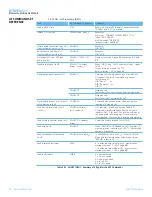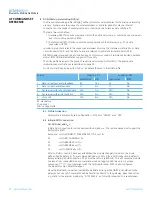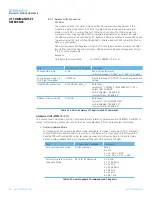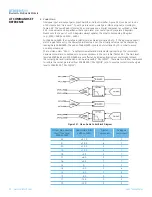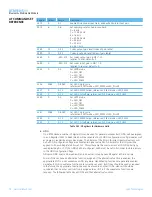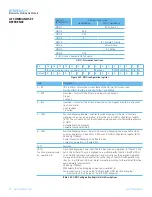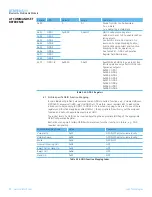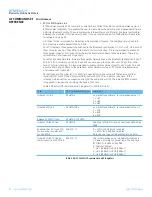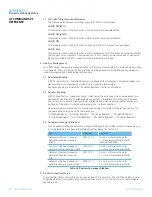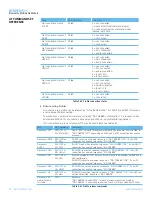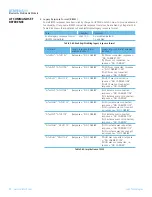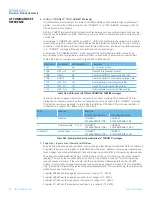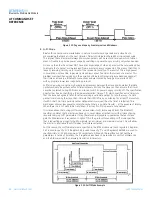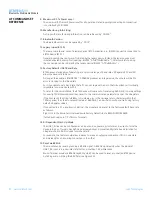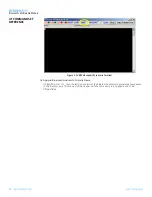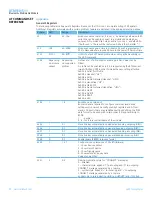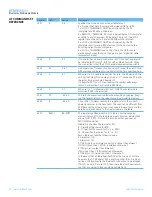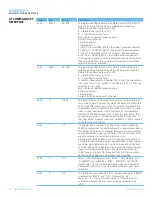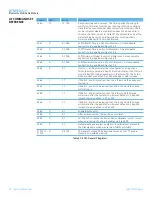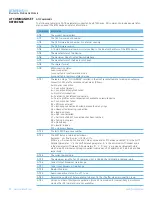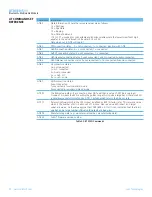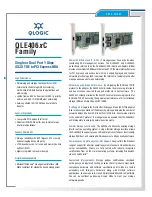
85
www.lairdtech.com
Laird Technologies
BTM510/511
Bluetooth
®
Multimedia Module
6. UUIDs in “CONNECT”/”NO CARRIER” Messages
In profiles where functionality and command set differs between both possible roles (asynchronous
profiles), role indicating UUIDs are used in the “CONNECT” and “NO CARRIER” messages. HSP and
HFP are asynchronous profiles.
A2DP and AVRCP are treated as synchronous profiles because only one profile instance with one role
selected can be initialised currently. Therefore, a common UUID is used indicating the profile only, but
not the role.
In a message “CONNECT <bd_addrhex>,<UUID>”, UUID is the profile/role the connection is made to.
Hence for an outgoing connection, UUID indicates the remote device’s profile/role. If it is an incoming
connection, UUID indicates the local device’s profile/role UUID. Hence, role indicating UUIDs presented
in a “CONNECT” message will be equal on both ends of a connected pair.
In a message “NO CARRIER <UUID>”, UUID represents the local profile/role UUID. Hence for an
asynchronous profile, role-indicating UUIDs will differ on both ends of a previously connected pair.
Table 3.64 Gives an overview of currently used UUIDs on BTM devices.
UUID (hex)
Profile/Role
Role indication
Comment
1101
SPP
No
Synchronous profile
1108
HSP – HS
Yes
Headset role (Headset profile)
110D
A2DP
No
Common UUID for source and sink role
110E
AVRCP
No
Common UUID for controller and target role
1112
HSP – AG
Yes
Audio gateway role (Headset profile)
111E
HFP – HF
Yes
Hands-free role (Hands-free profile)
111F
HFP – AG
Yes
Audio gateway role (Hands-free profile)
Table 3.64: UUIDs used in BTM5xx CONNECT/NO CARRIER messages
There is an option to append a direction indicator to a connect message. This enables the host to
distinguish an incoming connection from an outgoing connection based on the “CONNECT“ message.
The direction indicator only applies to role indicating UUIDs and if S329=0. The direction indicator is
configured by S register 331, please refer to Table 3.65.
S331
Meaning
Example
Incoming connection
Outgoing connection
0
Disabled
CONNECT
0123456789AB,1108
CONNECT
0123456789AB,1108
1
Character style, ‘I’ or ‘O’
CONNECT
0123456789AB,1108,I
CONNECT
0123456789AB,1108,O
2 (default)
Symbol style, ‘<’ or ‘>’
CONNECT
0123456789AB,1108,<
CONNECT
0123456789AB,1108,>
Table 3.65: Examples for direction indication in “CONNECT” messages
7. Page Scan / Inquiry Scan Interval and Window
Page scanning means being connectable. Inquiry scanning means being discoverable. With the following
S registers the power consumption of the BTM can be influenced. However, lower power consumption
means longer connection establishment time and longer time until a BTM is discovered by other devices.
The page scan window defines the time for the module to look out for incoming connection requests
(paging). The inquiry scan window defines the time for the module to look out for incoming inquiry
requests (device discovery). If the module is both connectable and discoverable (512=4 or AT+BTP
issued), it will mutually do page scanning and inquiry scanning as shown in Figure 3.33. If connectable
only, the module will perform page scanning only (repeatedly) and if discoverable only, then the module
will perform page scanning only.
S register 508 defines the page scan interval in ms, range is [11..2250].
S register 509 defines the page scan window in ms, range is [11..2250].
S register 510 defines the inquiry scan interval in ms, range is [11..2250].
S register 511 defines the inquiry scan window in ms, range is [11..2250].
AT COMMAND SET
REFERENCE


